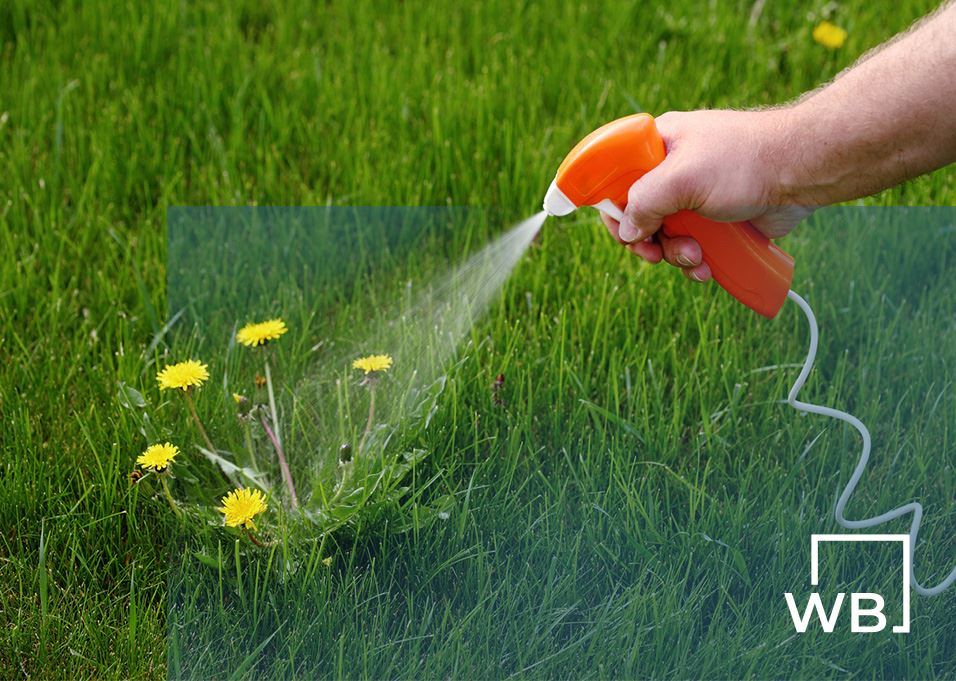
Monsanto Roundup Cancer FAQ

In the United States, thousands of people have filed lawsuits against Monsanto alleging exposure to Roundup weed killer caused them to develop non-Hodgkin lymphoma. While the litigation has been pending for years, many people have questions regarding what the litigation is about.
On this Roundup cancer lawsuit FAQ page, we answer some of the most commonly asked questions pertaining to the Roundup litigation against Monsanto.
Learn More About the Glyphosate Cancer Link in Our Roundup Videos
According to Monsanto executive, Stephen Adams, “[w]ith regards to the carcinogenicity of our formulations we don’t have such testing on them directly…”
Dr. Mark Martens, a Monsanto scientist, noted in 2001, “I don’t know for sure how suppliers would react – but if somebody came to me and said they wanted to test Roundup I know how I would react – with serious concern.”
In 1999, Monsanto hired Dr. James M. Parry, a professor at the University of Wales, to conduct an internal (and secret) safety review of glyphosate and the formulated product. Monsanto decided to do this, in part, because a 1998 study found that glyphosate produces oxidative stress and genotoxicity (a destructive effect on genetic material) in animals.
Dr. Parry recommended that Monsanto conduct studies on the Roundup formulated product (glyphosate plus surfactant) because there was “[n]o adequate in vitro clastogenicity data available for glyphosate formulations.” A clastogen is an agent that can induce genetic mutation by disrupting or damaging chromosomes. Cells become cancer cells largely because of mutations in their genes.
In his review, Dr. Parry concluded that glyphosate is capable of producing genotoxicity both in vivo and in vitro by a mechanism based upon the production of oxidative damage. Oxidative damage to DNA can lead to cancer.
After reviewing the data, Dr. Parry asked Monsanto to conduct studies to see if there was a synergistic effect with regard to glyphosate and the surfactant, to actually see if the Roundup product people use was genotoxic to humans.
In this email, Monsanto executive William Heydens states: “We simply aren’t going to do the studies Parry suggests.” Roughly 20 years later, Monsanto still has not performed the studies Dr. Parry asked for. This was one of the most important issues for the jury in the Johnson case –Monsanto has never tested the carcinogenicity of the Roundup formulated product, and never turned over Dr. Parry’s report to the EPA or shared the report with anybody.
FREQUENTLY ASKED QUESTIONS
Have questions? We are here to help. Still have questions or can't find the answer you need? Give us a call at 855-948-5098 today!
-
What is Roundup?
Roundup is a non-selective herbicide used to kill weeds that compete with agricultural crops. Glyphosate, the active ingredient in Roundup, works by inhibiting a specific enzyme required for plant growth.
By 2001, Roundup weed killer was the most-used active ingredient in American agriculture, with an estimated 85-90 million pounds used each year. In 2007, that number reached 185 million pounds annually and today, Roundup remains the most widely used herbicide in the United States and worldwide.
-
Does Roundup Cause Cancer?
Yes, and Monsanto has known about the link between Roundup and cancer for decades.
In 2015, the International Agency for Research on Cancer (IARC), the cancer research arm of the World Health Organization, classified glyphosate as a “probable human carcinogen.” Glyphosate is the active ingredient in Monsanto’s Roundup.
IARC, widely considered the gold standard in the field of cancer research, analyzed all published, peer-reviewed data to come to this conclusion. Per the report, the cancer most associated with glyphosate exposure is non-Hodgkin lymphoma.
The link between Roundup and cancer is not just about glyphosate. Roundup is made up of other ingredients that are toxic in and of themselves, and they also work synergistically to increase the toxicity of glyphosate. Monsanto has known this for many years but still refuses to study the link between cancer and the formulated Roundup product people actually use.
-
How Does Glyphosate Herbicide Cause Cancer?
Various studies have shown that exposure to glyphosate can cause DNA damage and DNA strand breaks, which is an important precursor to cancer. Indeed, the IARC specifically assessed the genotoxicity of Roundup (the property of chemical agents that damages the genetic information within a cell causing mutations, which may lead to cancer) and concluded that “[t]here is strong evidence that glyphosate causes genotoxicity.”
Additionally, the glyphosate herbicide studies have shown that glyphosate exposure can induce oxidative stress, which is thought to be involved in the development of numerous conditions, including cancer, autism and Parkinson’s disease. When the IARC evaluated whether glyphosate was associated with oxidative stress, the agency concluded that “strong evidence exists that glyphosate . . . can induce oxidative stress.” This could be an important mechanism by which Roundup causes cancer.
In addition to DNA damage and oxidative stress, some scientists have suggested Roundup’s association with various serious health conditions is linked to the effect that Roundup has on the digestive system. Specifically, some scientists believe the same mechanism that makes Roundup toxic to weeds also makes it toxic to the microbes within the human gut. When humans are exposed to Roundup, it leads to a chronic inflammatory state in the gut, as well an impaired gut barrier, which can lead to many long-term health effects, including an increased risk of cancer.
-
Does Roundup Cause Non-Hodgkin Lymphoma?
In the IARC Monograph on glyphosate, the researchers conducted a systematic review of over 15 studies designed to assess whether there was an association between Roundup exposure and non-Hodgkin lymphoma (NHL).
The researchers reviewed each study, identified the results and assessed each study’s strengths and weaknesses. After the evaluation, the IARC concluded that despite the limited evidence concerning the carcinogenicity of glyphosate in humans, a “positive association has been observed for non-Hodgkin lymphoma.”
In addition to the IARC’s assessment, in 2014, scientists published a systematic review and meta-analysis on the relationship between non-Hodgkin lymphoma and occupational exposure to agricultural pesticides, including glyphosate, in the International Journal of Environmental Research and Public Health. The study showed a statistically significant association between farm workers exposed to Roundup and non-Hodgkin lymphoma.
The glyphosate study confirmed two smaller studies from 2002 and 2008, published in the journal Leukemia & Lymphoma (2002) and the International Journal on Cancer (2008), both of which also showed a statistically significant increase in non-Hodgkin lymphoma among agricultural workers exposed to glyphosate.
Collectively, these studies suggest that Monsanto Roundup causes non-Hodgkin lymphoma, especially in agricultural workers.
-
How Do I Know If I Got Cancer from Roundup?
According to a 2008 study on the link between herbicides and cancer, exposure of 10 or more days use in a year to Roundup can potentially double a person’s risk of developing non-Hodgkin lymphoma. Likewise, according to a 2001 study, use of Roundup more than 10 hours over more than 2 days in a year can double the risk of NHL. Therefore, even people who used Roundup around their home may have been exposed enough for Roundup to play a significant role in their cancer. -
Is Roundup a Carcinogen?
The International Agency for Research on Cancer (IARC), one of the foremost cancer research authorities in the world, classified glyphosate, the active ingredient in Roundup, as a “probable human carcinogen.”
IARC Monograph 112 further concluded that the cancer most associated with glyphosate exposure is non-Hodgkin lymphoma (NHL). Additionally, IARC found strong evidence that glyphosate and commercial formulations can be genotoxic and produce oxidative damage.
According to the California Environmental Protection Agency’s Office of Environmental Health Hazard Assessment (OEHHA), glyphosate is a chemical known to the state of California to cause cancer and should be labeled as such under the terms of Proposition 65.
-
What Are the Side Effects of Roundup?
In addition to non-Hodgkin lymphoma, exposure to Roundup weed killer has been linked to the following:
- ADHD
- Alzheimer’s
- Anencephaly
- Autism
- Birth Defects
- Brain Cancer
- Breast Cancer
- Celiac Disease
- Chronic Kidney Disease
- Colitis
- Depression
- Diabetes
- Gluten Intolerance
- Heart Disease
- Hypothyroidism
- Infertility
- Inflammatory Bowel Disease
- Liver disease
- Lou Gehrig’s Disease (ALS)
- Miscarriage
- Multiple Sclerosis
- Obesity
- Parkinson’s Disease
- Reproductive Issues
- Respiratory Illness
-
Are Glyphosate and Roundup the Same Thing?
No.
Glyphosate is the active ingredient in Roundup. The Roundup formulated product sold to consumers is glyphosate plus other ingredients like surfactants, which increase the absorption of glyphosate on the leaves of plants and in human skin. Monsanto is well aware of this fact, as evidenced by a company report from 2001:
“Surfactants are able to increase glyphosate absorption through the skin by (1) removal of lipids (sebum) from the epidermal surface due to surfactant action, (2) increase of the hydration state of the skin (under closed exposure conditions), (3) increase of skin contact (spreading of water droplets by surfactant action), (4) increase of contact time with the skin due to decrease of evaporation of water from the droplets containing surfactant (surfactant monolayer at surface of droplets slows down passage to vapour phase, (5) increase of sub epidermal blood flow due to irritant action of surfactant, (6) intra-epidermal and sub epidermal intercellular water accumulation due to the irritant action of the surfactant.”
The Roundup formulated product you use has not been studied as much as glyphosate. In fact, internal Monsanto emails we obtained in the discovery phase of litigation show that Monsanto has not conducted any carcinogenicity studies on the Roundup formulated product.
In one email exchange, Monsanto executive Richard Garnett noted that studying the Roundup formulation “was not likely to help us.” Another Monsanto executive noted in the same email chain that after abandoning this kind of scientific inquiry, “[w]e are left behind with too many questions…”
“…the formulated product (and thus the surfactant) does the damage.” – Dr. William Heydens, Monsanto Executive
-
Is Roundup More Toxic Than Glyphosate?
This question is arguably more important than the toxicity of glyphosate because the formulated Roundup product is what people, animals and the environment are actually exposed to. Industry testing underlying the regulatory authorizations for Roundup have always been conducted on glyphosate by itself, even though the Roundup product contains other ingredients called surfactants and adjuvants.
According to various studies, other ingredients in Roundup may increase the toxicity of glyphosate by enabling the chemical to become more bioavailable and penetrate plant and animal cells with greater ease than glyphosate alone.
Monsanto is acutely aware of this. According to internal company documents from 2003, a top company scientist said:
“You cannot say that Roundup is not a carcinogen … we have not done the necessary testing on the formulation to make that statement.” – Donna Farmer, Monsanto
In May of 2018, the National Toxicology Program (NTP) issued a preliminary report on its evaluation of glyphosate formulations. According to Mike DeVito, acting chief of the NTP Laboratory, “[w]e see the formulations are much more toxic. The formulations were killing the cells.”
-
How Much Glyphosate Is in Roundup?
The following list details the percentage of glyphosate in specific Roundup products:
- Roundup QuikPRO is 73.3% glyphosate
- Roundup Custom is 53.8% glyphosate
- Roundup PRO Concentrate is 50.2% glyphosate
- Roundup Weed & Grass Killer Super Concentrate is 50.2% glyphosate
- Roundup ProMAX is 48.7% glyphosate
- Roundup Original is 41% glyphosate
- Roundup Max Control 365 Concentrate is 18% glyphosate
- Roundup Poison Ivy Concentrate Plus is 18% glyphosate
- Roundup Weed & Grass Killer Concentrate Plus is 18% glyphosate
- Roundup Extended Control Concentrate is 18% glyphosate
- Roundup Ready-to-Use Weed & Grass Killer is 2% glyphosate
- Roundup Precision Gel is 1% glyphosate
- Roundup Extended Control is 1% glyphosate
- Roundup Ready-to-Use Poison Ivy is 1% glyphosate
-
What Products Contain Glyphosate?
- Monsanto:
- Aquamaster®
- Bronco®
- Campaign®
- Expedite®
- Fallow Master®
- Honcho®
- Landmaster®
- Pondmaster®
- Protocol®
- Ranger®
- Roundup®
- RT 3®
- Dow AgroSciences:
- Accord®
- Durango®
- Duramax®
- Glyphomax®
- Glypro®
- Rodeo®
- DuPont:
- Abundit Extra®
- Cenex / Land O’Lakes:
- Silhouette®
- Helena:
- Rattler®
- Hoss Ultra®
- Showdown®
- Loveland:
- Mirage®
- KleenUp®
- Makaze®
- Mad Dog®
- Riverside/Terra:
- Jury®
- Syngenta:
- Touchdown®
- Monsanto:
-
What Does EPA Say About Glyphosate?
In 1985, the eight members of U.S. Environmental Protection Agency (EPA) toxicology branch signed a consensus review classifying glyphosate as a possible carcinogen based on studies that showed tumor growth among rodents treated with glyphosate. According to the EPA scientists who reviewed the studies, glyphosate appeared to cause testicular tumors in male rats, thyroid tumors in female rats and a rare form of kidney tumor in mice.
The mice finding was what led EPA to classify glyphosate as a “possible” carcinogen. At the time of this classification, Roundup had already been on the market for over a decade.
However, documents obtained via Freedom of Information Act requests by Carey Gillam from U.S. Right to Know (USRTK) show that a Monsanto manager responded to the EPA’s glyphosate classification by arranging for the kidney tumor slides to be reexamined by an academic pathologist — a man who could “persuade the agency that the observed tumors are not related to glyphosate.”
The pathologist did exactly that and found a tumor among the control mice that nobody else (including the EPA scientists) could find, which effectively called into question the scientific conclusions gleaned from the tumors among the mice treated with glyphosate.
Monsanto argued that in lieu of the single observed control group tumor, it should be given another opportunity to test glyphosate. But when the agency asked Monsanto to repeat the rodent study (it was, in fact, Monsanto’s study to begin with), Monsanto declined. (A “control group” is the group in an experiment or clinical trial that does not receive the same treatment as the experiment group(s).)
In the end, Monsanto’s stonewalling and influence allowed glyphosate to be downgraded from a Group C carcinogen (“possibly” carcinogenic to humans) in 1985 to a Group D carcinogen (“not classifiable as to human carcinogenicity”) in 1986. The EPA reviewed the data on glyphosate again in 1991 and downgraded the chemical yet again to Group E (“evidence of noncarcinogenicity in humans”).
Not all of the EPA scientists on the 1991 panel agreed with the conclusion. In fact, two of the scientists would not even sign the paper that classified glyphosate to Group E.
After six years of pressure from Monsanto to change the EPA’s glyphosate classification from possible carcinogen to no evidence of carcinogenicity, the agency has stuck with the Group E classification ever since.
-
Which Glyphosate Assessment Is More Reliable: EPA or IARC?
IARC is widely considered the worldwide gold standard in the field of cancer research. As an independent agency, its sole mission is human health.
Seventeen world-renowned scholars came to a unanimous determination on glyphosate in IARC’s 2015 Monograph. Dr. Aaron Blair, who only recently retired from the U.S. National Cancer Institute after a career spanning decades, led the IARC Working Group in drafting the glyphosate Monograph.
IARC’s glyphosate Monograph is up-to-date. After reviewing all relevant and available research, the Working Group considered a broad range of evidence, including human epidemiology and other peer-reviewed studies.
The EPA’s last assessment of glyphosate was conducted in 1993, though the agency is expected to release a new report on glyphosate sometime in 2019. In its 1993 assessment, the EPA relied almost entirely on industry-funded studies and did not analyze epidemiological data.
While the EPA is also charged with protecting human health, the agency’s ties to Monsanto have become a cause for concern. A trove of documents that are now a part of The Monsanto Papers show that EPA officials may have colluded with Monsanto to quash another U.S. agency’s review of glyphosate. According to the documents, Monsanto was worried about the Agency for Toxic Substances and Disease Registry (ATSDR) becoming “a domestic IARC…” with its review of glyphosate.
“I think it’s very clear… that EPA officials and Monsanto employees worked together to accomplish a goal of stopping that analysis at ATSDR. That is collusion. I don’t know what else you’d call that,” says Wisner Baum attorney R. Brent Wisner.
-
Who Can File a Roundup Lawsuit Against Monsanto?
Our firm represents a wide range of individuals who were diagnosed with non-Hodgkin lymphoma (NHL) after using Roundup. Most of our clients are individuals who sprayed Roundup around their home or business. We also represent government workers, farmers, agricultural workers, gardeners, landscapers and others.
-
Why Are People Suing Monsanto Over Roundup?
For years, Monsanto has claimed (and continues to claim) that Roundup is safe. However, numerous studies have found statistically significant links between Roundup and a host of serious health issues, including cancer. Even Monsanto’s own studies on Roundup and its active ingredient, glyphosate, have shown that Roundup is not as safe as Monsanto claims.
In 2015, the World Health Organization’s International Agency for Research on Cancer (IARC), one of the foremost cancer research authorities in the world, classified the active ingredient in Roundup (glyphosate) as a probable human carcinogen. The IARC report further concluded that the cancer most associated with exposure to glyphosate is non-Hodgkin lymphoma.
The Roundup cancer litigation seeks to hold Monsanto accountable for failing to warn the public about the link between Roundup exposure and cancer. Monsanto has known for decades about the link between Roundup and cancer, but has continued to market its product as safe, putting profit over human safety.
-
Have There Been Any Monsanto Settlements or Verdicts?
There have been three Roundup cancer trials against Monsanto, all of them successful for the plaintiffs. Our law firm served on all three trial teams for these cases.
- Johnson v. Monsanto – $289M verdict on 8/10/2018
- Hardeman v. Monsanto – $80M verdict on 3/27/2019
- Pilliod et al., v. Monsanto – $2.055 billion verdict on 5/13/2019
Monsanto (now Bayer) announced a settlement on June 24, 2020. Our law firm issued the following statement:
Wisner Baum Statement regarding Roundup Litigation Settlement: Wisner Baum is pleased with the settlement. It is a big first step in correcting the forty years of harm caused by glyphosate. Non-Hodgkin lymphoma is devastating. Over the last four years, as we have pressed this litigation forward despite innumerable obstacles, we have had tremendous success in a few important cases. But, those successes have been tempered with the fact that many of our clients continue to suffer from the consequences of cancer. This settlement is for everyone and should help our clients rebuild and move forward in a meaningful way. Actual settlement amounts are yet to be determined, and each of our clients will be made an individual offer based on the facts of their case. For now, however, this is an important and historic day in the fight to protect consumers from harmful pesticides. And, while the story of glyphosate is not over-- there are likely many fights surrounding cancer, food safety, and GMOs to be had-- this chapter of the glyphosate litigation is over.
-
Will the Verdicts Help Ban Roundup in California?
Only a governmental entity can ban a chemical. The purpose of the Johnson case and others like it is to hold Monsanto accountable for failing to warn that Roundup can cause cancer and to compensate individuals for the damages (cancer) caused by Roundup use.
California’s EPA, known as The Office of Environmental Health Hazard Assessment (OEHHA), added glyphosate, the active ingredient in Monsanto’s Roundup weed killer, to the state’s Proposition 65 list of chemicals known to cause cancer on July 2, 2017. Within about a year of OEHHA’s decision, a warning label would normally be added to the Roundup label, however Monsanto sued OEHHA to stop this from happening. In June 2020 the judge overseeing the case decided in favor of Monsanto and said that it would violate the company’s right to free speech if they were required to include a cancer warning on its Roundup products.
While an outright ban is not likely in the short term, some communities in California have banned glyphosate (Roundup). To see a comprehensive list of many cities, states and countries restricting and banning Roundup, view our Where is Glyphosate Banned page.
-
What Are the Monsanto Papers?
The Monsanto Papers are a collection of internal Monsanto documents unearthed during the discovery phase of the federal Monsanto Roundup litigation. The documents consist of internal Monsanto emails, text messages, reports, reviews, studies, and other memoranda.
A judge overseeing the federal Monsanto Roundup litigation declassified the first batch of documents and published them on the website of the U.S. District Court for the Northern District of California on March 14 and 15, 2017. Wisner Baum released the second batch of Monsanto secret documents on August 1, 2017. We have released more and more declassified documents since that time with December 2, 2019 being our most recent batch.
The Monsanto Papers tell an alarming story of ghostwriting, scientific manipulation, collusion with the Environmental Protection Agency (EPA), and previously undisclosed information about how the human body absorbs glyphosate. These documents provide a deeper understanding of the serious public health consequences associated with Monsanto’s conduct in marketing Roundup.
Some key revelations in the Monsanto Papers:
- Monsanto hardly tested the toxicity of the Roundup formulated product.
- Monsanto actively avoided conducting studies on glyphosate and the Roundup formulation that might cast doubt as to the safety of its products.
- Monsanto ghostwrote studies that were supposed to be conducted by independent scientists.
- Monsanto implemented a PR strategy to attack scientists who called into question the safety of its products.
-
As a Farmer, I Depend on Roundup and Use It Regularly. Are Lawyers Trying to Get Rid of Roundup?
The Roundup cancer litigation is not about getting rid of Roundup; it is about Monsanto’s failure to warn people that exposure to Roundup can lead to cancer, something Monsanto has known for decades.
Monsanto should warn consumers about the cancer link so that people have the opportunity to know what they are consuming and at what cost. Instead, Monsanto continues to tout Roundup as safe and attacks scientists or anyone else who says anything to the contrary. Meanwhile, many men, women, and children exposed to Roundup are getting sick.
In essence, this litigation is about Monsanto being held to account for depriving consumers of information needed to make an educated decision on whether or not to purchase and use a product that can cause harm. Monsanto has robbed them of this choice.
If Monsanto had put a warning label on Roundup when it first learned of the cancer link, there would not be any litigation to speak of.
Monsanto continues to keep consumers in the dark about the dangers surrounding Roundup. Our firm will continue to fight for and on behalf of consumers to bring those dangers to light and hold Monsanto accountable for failing to warn.
-
What is the Monsanto Roundup Class Action Lawsuit?
On June 20, 2017, six individuals from Wisconsin, Illinois, California, New York, New Jersey, and Florida filed a class action lawsuit against Monsanto alleging the company falsely promoted Roundup as interfering with an enzyme found only in plants, but not “in people or pets.”
According to the complaint, Monsanto’s marketing claim that Roundup is safe—because it targets an enzyme that is not found in people or pets—is “false, misleading, and deceptive, as the enzyme that glyphosate targets is found in people and pets—specifically, in beneficial gut bacteria.”
Glyphosate kills weeds by interfering with the “shikimate pathway,” a metabolic sequence that synthesizes vital amino acids. Glyphosate disrupts the shikimate pathway by interfering with 5-enolpyruvylshikimate-3-phosphate (EPSP), an enzyme that governs aromatic amino acid formation.
Beneficial bacteria in the human gut (and the guts of other mammals) produces and utilizes EPSP synthase. Our immune systems depend on this beneficial gut bacteria.
Plaintiffs in the case are seeking compensation for themselves and class members equal to the amount they paid for Roundup products, which they would never have purchased had they been adequately informed that glyphosate targets an enzyme that exists in both humans and animals, contrary to Roundup’s marketing.
-
What Amount of Money Can I Expect from a Roundup Cancer Lawsuit?
On Aug. 10, 2018, a San Francisco, California jury awarded $289.2 million to Dewayne “Lee” Johnson in the first Roundup cancer lawsuit to proceed to trial. The jury verdict included $39.2 million for compensatory damages and $250 million in punitive damages.
Claims for damages and future verdicts and settlements in each Roundup lawsuit will vary in accordance with each individual situation and the rules of the court where a particular case is filed. These are some of the most common damages pursued by claimants:
- Medical Expenses
- Lost Wages or Income
- Reduced Earning Capacity
- Personal Injury
- Pain and Suffering
- Wrongful Death (if a loved one passed away from NHL)

OVER $4 billion
in verdicts & Settlements
Our top priority is to devise customized legal strategies that are tailored to the unique legal needs of our clients, no matter how simple or complicated their situations, might be.
-
$2.0 Billion Verdict Personal Injury
In May of 2019, the jury in the case of Pilliod et al. v, Monsanto Company ordered the agrochemical giant to pay $2.055 billion in damages to the plaintiffs, Alva and Alberta Pilliod, a Bay Area couple in their 70s.
-
$289.2 Million Verdict Personal Injury
On Aug. 10, 2018, a San Francisco jury ordered Monsanto to pay $39.25 million in compensatory damages and $250 million in punitive damages to Mr. Johnson, a former groundskeeper who alleged exposure to Monsanto’s herbicides caused him to develop terminal non-Hodgkin lymphoma.
-
$265 Million Settlement Fatal Train Crash
In 2016, Wisner Baum attorney Timothy A. Loranger and six other attorneys in the Plaintiffs’ Management Committee were able to secure a $265 million settlement for victims of the 2015 Amtrak 188 derailment in Philadelphia, one of the largest in the U.S. for 2016.
-
$105 Million Settlement Pharmaceutical Settlement
Wisner Baum obtained $105 million on behalf of multiple clients involved in a pharmaceutical negligence case.
-
$80 Million Verdict Personal Injury
Wisner Baum attorneys served on the trial team in the case of Hardeman v. Monsanto Company, which resulted in an $80 million jury verdict for the plaintiff, Edwin Hardeman.

Our Case Results

-
$265 Million Settlement Fatal Train Crash
In 2016, Wisner Baum attorney Timothy A. Loranger and six other attorneys in the Plaintiffs’ Management Committee were able to secure a $265 million settlement for victims of the 2015 Amtrak 188 derailment in Philadelphia, one of the largest in the U.S. for 2016.
-
$3.5 Million Settlement Fatal Train Crash
Wisner Baum secured a $3.5 million settlement on behalf of an individual who died on a train.
-
$2 Million Settlement Fatal Train Crash
Wisner Baum obtained a $2 million settlement on behalf of a passenger who died on a train.
-
$2.8 Million Settlement Wrongful Death
Wisner Baum obtained a $2.8 million wrongful death settlement for a train passenger.

Client-Focused Representation
REVIEWS & TESTIMONIALS
We believe our track record speaks for itself. But you don’t have to take our word for it. See what our clients have to say about working with us.
-
"I Can’t Imagine a Better Law Firm"
Multiple lawyers recommended Wisner Baum to me and I have been consistently impressed with the quality of their work.
- Best Law Firms Survey -
"They Are About Changing the Systems..."
Wisner Baum are not only amazing attorneys but more importantly, they are activists. They are about changing the systems which got us into trouble in the first place. They understand their role in the process of making change.
- Kim Witczak -
"Top Legal Minds in the Country"
The Wisner Baum firm has some of the top legal minds in the country; they are driven, determined, trustworthy, ethical and passionate.
- From Best Lawyers® Best Law Firms





.2110081511550.png)